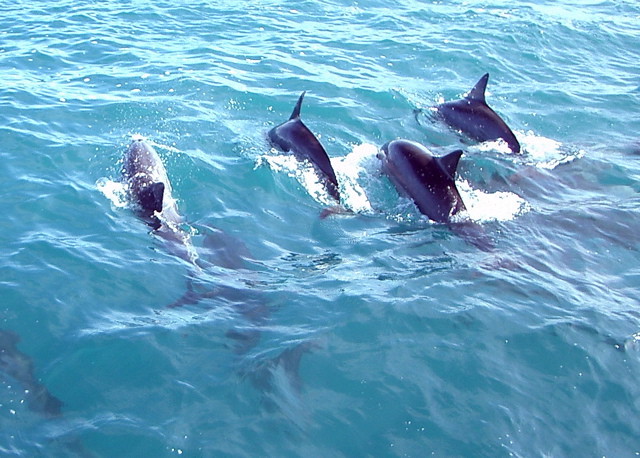Whales and dolphins, collectively known as cetaceans, have captivated scientists and ocean lovers alike with their highly developed communication systems. These marine mammals use an intricate combination of sounds, body language, and physical contact to interact with one another, creating a rich, social environment in the oceans. Let’s delve into how cetaceans communicate and explore some of the enduring mysteries of their underwater conversations.
How Whales and Dolphins Communicate
1. Sounds
One of the most striking features of cetacean communication is their use of sound. These animals rely on a variety of vocalizations to navigate, hunt, and socialize, including clicks, whistles, and songs.
- Clicks: Primarily used for echolocation, clicks help cetaceans navigate their surroundings and locate prey. These sounds work like sonar, emitting sound waves that bounce off objects, allowing whales and dolphins to interpret the returning echoes and understand their environment.
- Whistles: Whistles are typically used for social communication. Dolphins, for instance, are known for their unique signature whistles, which act much like personal names. These sounds convey important information about identity, emotional state, and location, enabling cetaceans to maintain social bonds.
- Songs: Perhaps the most famous form of cetacean vocalization is the complex and mesmerizing songs produced by some whale species, particularly humpback whales. These songs can last for hours and are thought to be involved in mating and social bonding. Although much is still unknown about the precise purpose of these songs, they are central to the social lives of these majestic animals.
2. Body Language
Beyond sounds, cetaceans rely heavily on body language for communication, using dynamic movements to signal intent and emotion.
- Breaching: This behavior, where a whale or dolphin leaps out of the water and crashes back down, can be a sign of excitement, a form of play, or even a warning signal.
- Tail Slapping: By slapping their tails on the water’s surface, cetaceans create a loud sound that can signal their presence or establish dominance within a group.
- Pectoral Fin Slapping: Another common behavior is slapping the water with their pectoral fins, which may be used as a playful gesture or to communicate intent, adding another layer to their already sophisticated non-verbal cues.
3. Physical Contact
Physical touch plays a crucial role in cetacean communication. Dolphins, in particular, are known for engaging in gentle rubbing or nudging, behaviors that are thought to strengthen social bonds and convey affection. This form of contact helps establish trust and maintain relationships within groups.
Mysteries in Cetacean Communication
Despite the vast knowledge we have about cetacean communication, there are still numerous unanswered questions. Several mysteries continue to intrigue scientists and drive ongoing research.
1. The Purpose of Whale Songs
While it is clear that male humpback whales sing intricate and hauntingly beautiful songs, the precise purpose remains debated. Some theories suggest that these songs are a way to attract mates, much like birdsong. Others propose that they serve to establish dominance among males or help coordinate group behavior within whale pods. The exact function of these songs remains one of the most compelling mysteries in marine science.
2. Cross-Species Communication
Another fascinating area of study is the potential for cross-species communication among cetaceans. There have been numerous observations of different species interacting in the wild, such as dolphins riding the waves created by larger whales or forming temporary mixed-species groups. These interactions suggest that some level of communication is happening between species, but the nature and complexity of this communication are still largely unexplored.
3. Long-Distance Communication
Large cetaceans like blue whales are known to communicate across vast distances, sending low-frequency sounds that can travel across entire ocean basins. These sounds may help them find mates or maintain contact over hundreds of kilometers, but how these sounds are produced, transmitted, and interpreted remains an area of active research. Understanding long-distance communication could unlock new insights into the social structures and behaviors of these ocean giants.
